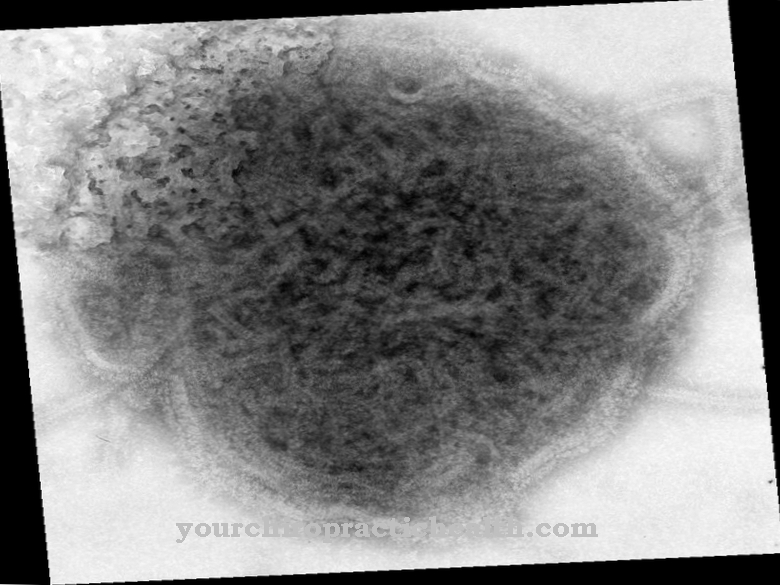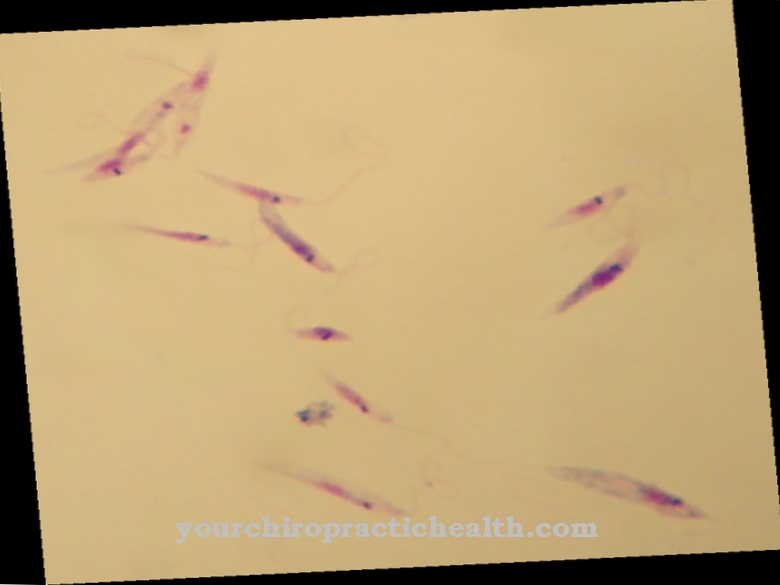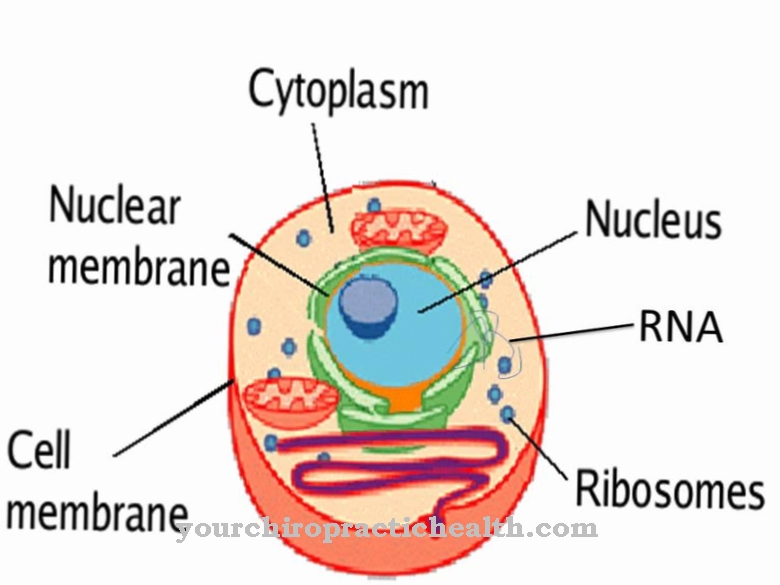Listeria monocytogenes is a type of bacteria from the Firmicutes division. The germ belongs to the genus Listeria. The generic name Listeria was named after the English surgeon Joseph Lister. The species name Monocytogenes was chosen because of the monocytosis, which is often caused by Listeria monocytogenes.
What is Listeria monocytogenes?
The bacterium has a rod-shaped shape and is mobile (motile) due to the flagella. It is approximately 0.4-0.5 micrometers in diameter and 0.5-0.2 micrometers long. The flagella or flagella are polar or peritrich, so they can appear at one or both ends or be scattered over the entire cell.
The bacterium is positive in the Gram stain and is not a spore-forming agent. There is an extraordinary resistance to negative environmental influences. The bacterium can survive both extended dry periods and high temperatures unscathed. Elevated salt concentrations and intense cold also pose no threat to the germ.
A settlement of the pathogen is prevented by a high pH value <4.4. PH values in the range from 4.4 to 9.8, i.e. in both an acidic and a basic environment, are suitable for propagation of Listeria monocytogenes. Temperatures of 30 to 37 degrees Celsius are ideal for the germ to develop quickly, but normal refrigerator temperatures of up to 4 degrees Celsius can only stop the growth of the pathogen to a limited extent. However, the bacterium is safely killed by very high temperatures. Pasteurization and sterilization as well as conventional roasting and cooking processes can thus render the germ harmless.
Colony morphology shows a similarity to Streptococcus agalactiae. The large, round and blue-gray colonies of the two types of germs can easily be confused on the agar. Slight ß-hemolysis is also present in both types of bacteria on Columbia blood agar.
Occurrence, Distribution & Properties
The germ is facultative-anaerobic and ubiquitous. It is not restricted to specific host organisms or certain habitats. Listeria monocytogenes has been found in 37 species of mammals and 17 species of birds. The germ can even be detected in marine life such as fish and shellfish. The infections in humans are estimated at 1-10%.
The high virulence of Listeria monocytogenes can primarily be explained by the pathogen's sophisticated defense strategies. The toxin listeriolysin 0 (LL0) enables the germ to free itself from phagocytosis and, with the help of the surrounding phagocytes, pass all blood barriers in the body unhindered. Furthermore, the pathogen can pass through cell walls unnoticed without having to expose itself to extracellular defense processes.
Despite their facultative intracellular parasitism, Listeria are not dependent on host organisms and can also survive in the soil, water and on various plants. Due to the possibility of forming a biofilm on numerous different surfaces, Listeria monocytogenes is a real survivor and can be detected in a wide variety of terrains.
Illnesses & ailments
Listeria monocytogenes is a facultative pathogenic germ that can cause a variety of diseases. The diseases are summarized as listeriosis and can occur in humans and animals. Typical routes of infection are contaminated foods and foods of animal origin with nonexistent or poorly performed sterilization or pasteurization. Listeria can also be transmitted from person to person, person to animal, etc. through skin contact.
A typical Listeria infection goes unnoticed and without clear symptoms. The infection can lead to an acute illness due to other favorable factors such as immunosuppression. Other viral, bacterial and parasitic infections can contribute to listeriosis. This process is recorded with an incidence of 2 to 15 cases per million people a year and is therefore extremely rare.
The clinical manifestation is initially shown by influenza-like symptoms such as fever as well as nausea, vomiting and diarrhea. The course is rather inconspicuous in immunocompetent people and symptoms in the gastrointestinal area remain the only complaints. Complications can occur in immunocompromised people. Inflammation, lymph node swelling, encephalitis and meningitis can occur here. Inflammation of the eye (keratitis, uveitis), throat, pharynx, urinary bladder and the renal pelvis were observed in particular.
Severe cases of encephalitis and meningitis have been recorded especially in the elderly. As a result, there is also a death rate of around 70%. The disease can also have serious consequences in pregnant women. Infection of the genital organs can lead to miscarriages and stillbirths. Newborns affected by listeriosis have a high mortality rate. Developmental disorders are often observed after a successful healing.
Due to the severe symptoms that Listeria monocytogenes can cause in immunosuppressed and pregnant women, proof of the pathogen is notifiable. Various antibiotics are given to treat listeriosis. The β-lactam antibiotic ampicillin is particularly recommended, in severe cases is combined with aminoglycoside. Cotrimoxazole can be considered as an alternative in the event of intolerance. The pathogen is particularly resistant to cephalosporins.
Appropriate hygiene measures, especially when processing and preparing food, are always recommended purely for prophylaxis. Proper frying and cooking can destroy numerous pathogenic strains such as Listeria monocytogenes. Delicacies such as bloody steak should only be prepared if there is precise information about the animal's origin and good health. However, since healthy animals without obvious symptoms can also be carriers of Listeria monocytogenes, it makes sense to avoid bloody and half-cooked delicacies.














.jpg)





.jpg)

.jpg)





